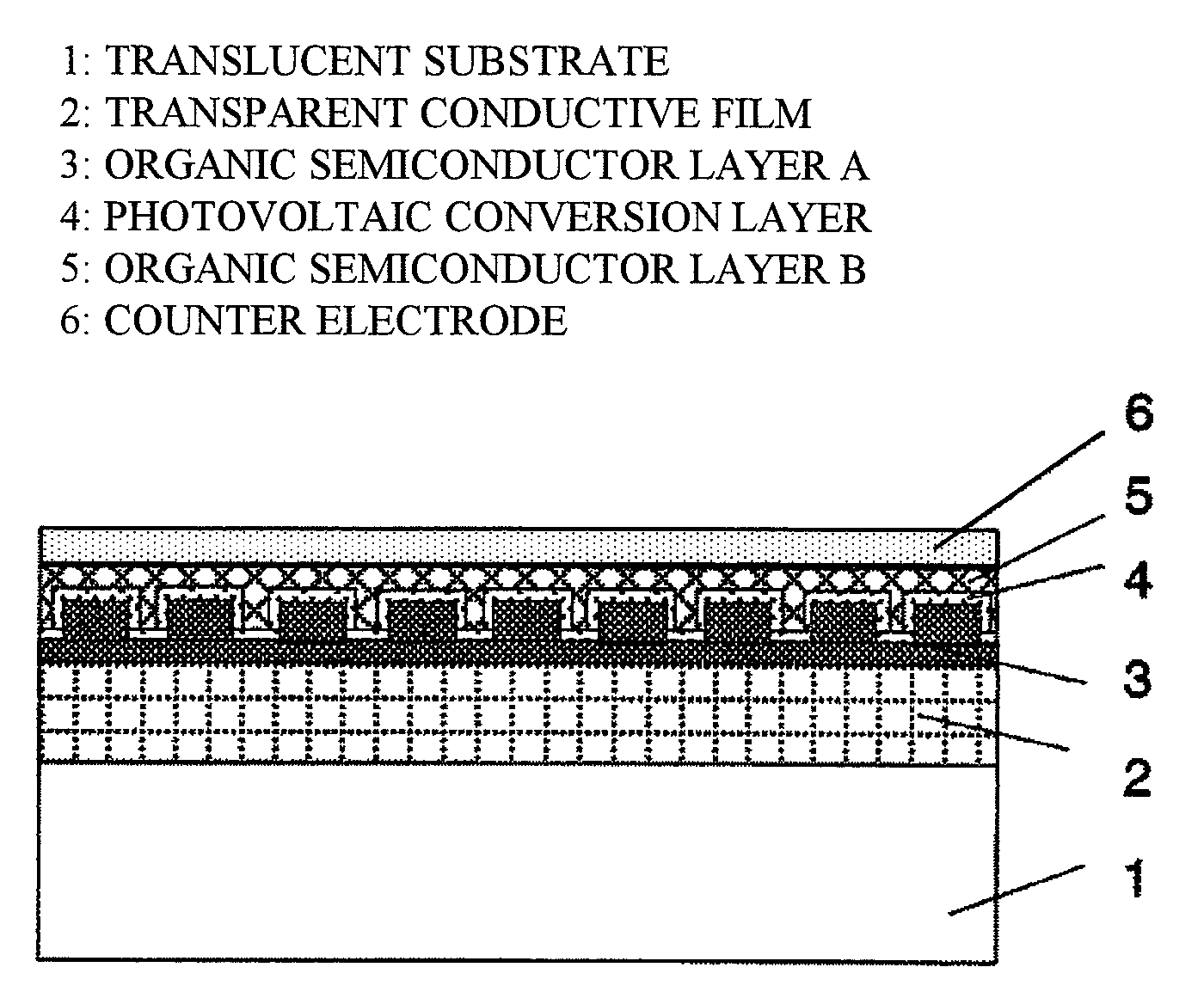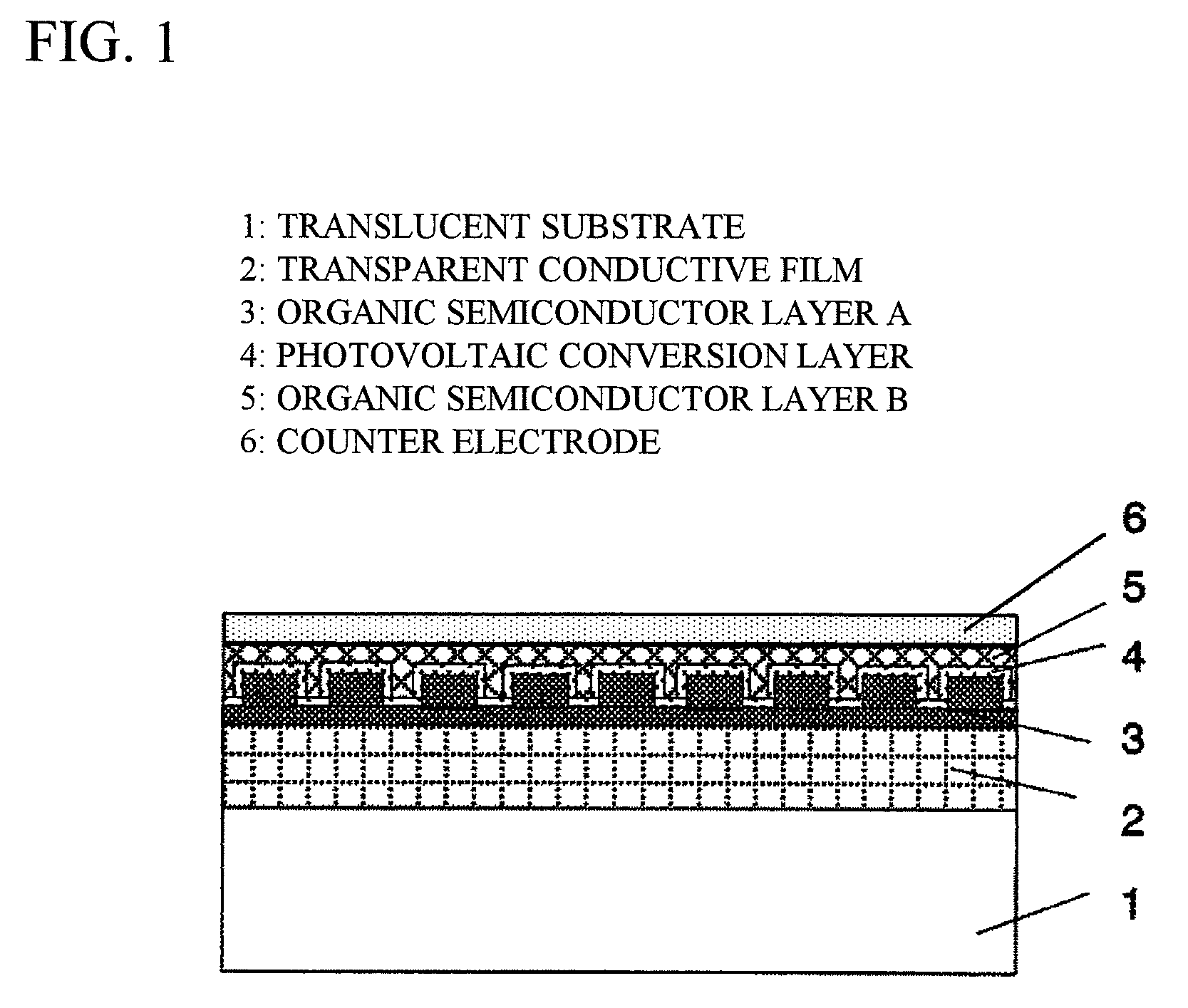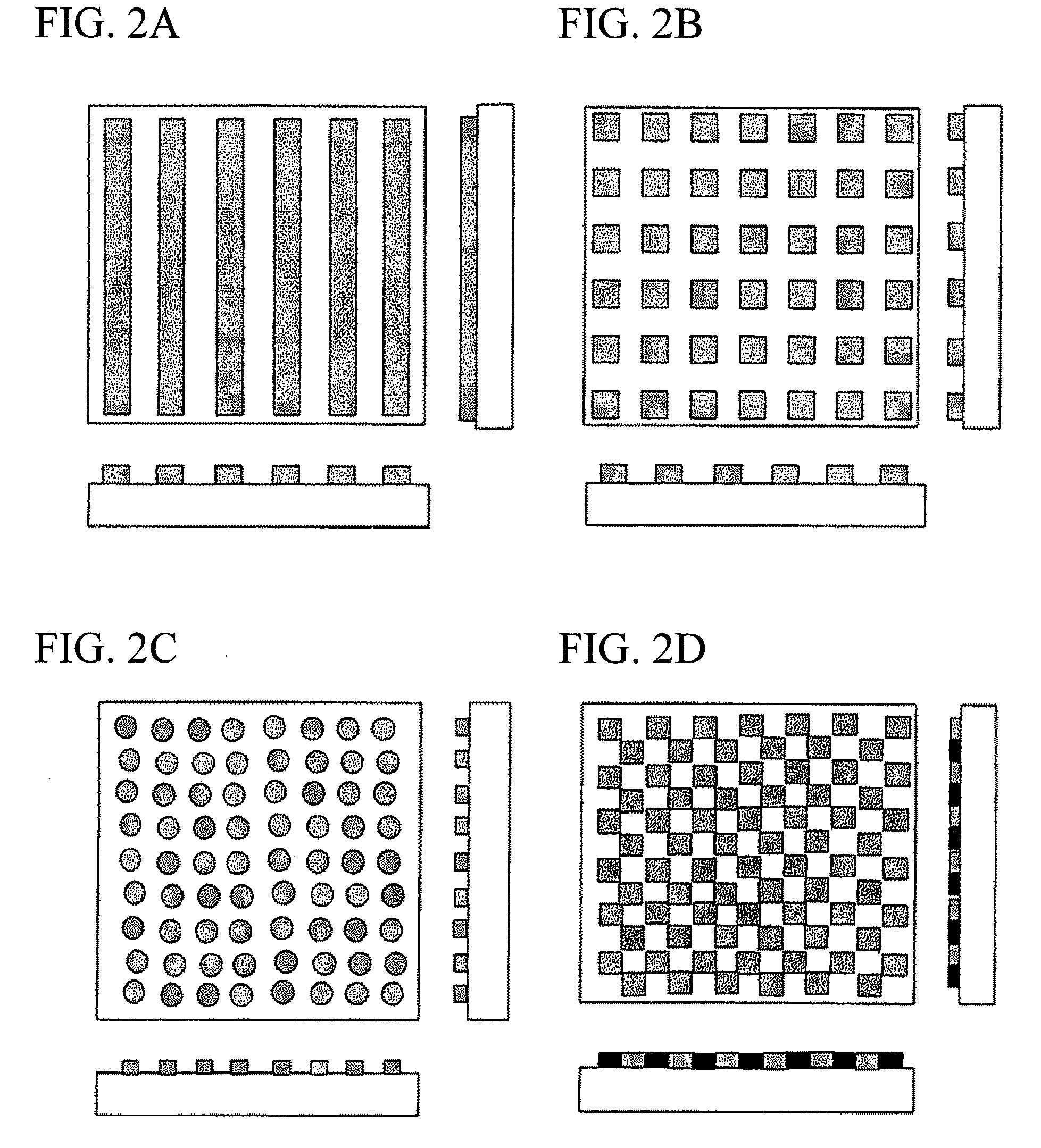Photovoltaic Cells and Manufacture Method
a photovoltaic cell and manufacturing method technology, applied in the field of organic thin film photovoltaic cells, can solve the problems of high energy required for manufacture, high cost of materials, and insufficient cost of expensive devices, and achieve the effect of increasing the efficiency of photovoltaic conversion
- Summary
- Abstract
- Description
- Claims
- Application Information
AI Technical Summary
Benefits of technology
Problems solved by technology
Method used
Image
Examples
first embodiment
[0043]Next, embodiments of the present invention are described, (with reference to FIG. 1, whenever necessary).
[0044]A substrate electrode 1 is a translucent glass substrate formed by depositing ITO (indium tin oxide) as a transparent electrode (hereinafter referred to as the ITO substrate). The ITO substrate is subjected to ultrasonic cleaning with the use of a toluene solution, an acetone solution, and an ethanol solution for 10 to 15 minutes, respectively. The ITO substrate is then washed with pure water or ultrapure water, and is dried with a nitrogen gas.
[0045]An UV-ozone treatment is then carried out with the use of an UV irradiation device such as an ozone cleaner, so as to form a hydrophilic base on the substrate surface. In this manner, a hydrophilic substrate on which an organic semiconductor layer can be readily deposited is formed.
[0046]A mixed solution containing PEDOT / PSS to be a hole transport layer and ethylene glycol at the mixing ratio of 5:1 is applied by a spin c...
second embodiment
[0053]Photovoltaic cells are produced in the same manner as in the first embodiment, except that a nano-imprint metal mold having the indented pattern shown in FIG. 2A is used to form the patterned indented interlayer of the hole transport layer.
third embodiment
[0054]The photovoltaic conversion layer is formed by a simultaneous vapor deposition technique, instead of the thin film formation by the alternate adsorption technique used to form the photovoltaic conversion layer of the first embodiment. By the simultaneous vapor deposition technique, a p-type organic semiconductor film and an n-type organic semiconductor film are formed simultaneously through vacuum vapor deposition. Other than that, the same procedures as those of the first embodiment are carried out to form photovoltaic cells.
PUM
| Property | Measurement | Unit |
|---|---|---|
| distance | aaaaa | aaaaa |
| contact angle | aaaaa | aaaaa |
| height | aaaaa | aaaaa |
Abstract
Description
Claims
Application Information
 Login to View More
Login to View More - R&D
- Intellectual Property
- Life Sciences
- Materials
- Tech Scout
- Unparalleled Data Quality
- Higher Quality Content
- 60% Fewer Hallucinations
Browse by: Latest US Patents, China's latest patents, Technical Efficacy Thesaurus, Application Domain, Technology Topic, Popular Technical Reports.
© 2025 PatSnap. All rights reserved.Legal|Privacy policy|Modern Slavery Act Transparency Statement|Sitemap|About US| Contact US: help@patsnap.com



